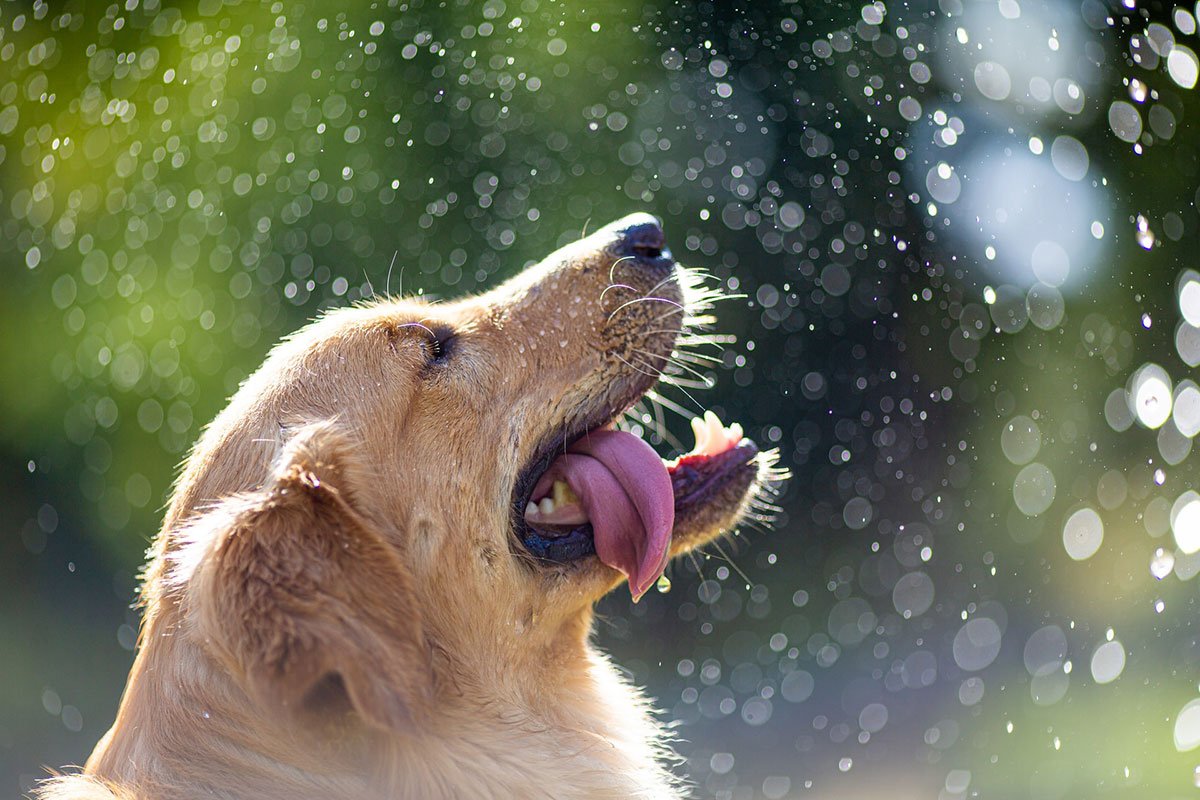Did you know over 70% of dog owners face big behavioral issues with their pets? Problems like aggression, too much barking, and destructive chewing are common. We’ll look at the 10 most common dog behavior problems and offer solutions to make your dog happier and better behaved.
Key Takeaways
- Over 70% of dog owners face major behavioral issues with their pets
- This article will cover the 10 most common dog behavior problems
- We’ll provide practical tips and expert advice to address these challenges
- Learn how to tackle issues like aggression, excessive barking, and destructive chewing
- Discover strategies to help your dog with separation anxiety, jumping, and leash pulling
Understanding the Most Common Dog Behavior Problems
As dog owners, we must tackle common behavior problems to keep our pets and homes happy. Issues like dog aggression, excessive barking, and destructive chewing can cause big problems. They can even lead to rehoming or euthanasia if not fixed.
By understanding why these problems happen and using training and socialization, we can solve them. This makes our dogs happy and well-adjusted.
Why It’s Important to Address Behavioral Issues
It’s key to fix problems like dog aggression, excessive barking, and destructive chewing. These issues can upset our homes and put our pets and family at risk. If not handled, they can cause damage, frustration, and even injuries.
The Role of Proper Training and Socialization
Training and socialization are crucial in preventing and managing dog behavior problems. By giving our dogs positive experiences, they learn to be well-adjusted and confident. Training with positive reinforcement teaches them good behaviors.
Early socialization also helps dogs feel comfortable with new things. This reduces the chance of aggressive or fearful behaviors.

Understanding the need to address behavior problems and the role of training and socialization is key. It helps our dogs thrive and become loving family members.
Dog Aggression: Causes and Solutions
Dealing with dog aggression can be tough for pet owners. But, by knowing the causes and using the right methods, we can solve this dog behavior problem. This makes our homes safer and more peaceful for our dogs.
Aggression in dogs comes from many things like fear, guarding things, or not being socialized well. Finding out why a dog is aggressive is key to fixing the problem.
Positive reinforcement training is a great way to start. It rewards good behavior and builds trust and a strong bond. Slowly getting a dog used to things that scare them can also help a lot.
Sometimes, getting help from a pro is needed. A certified dog trainer or animal behaviorist can help make a plan to stop dog aggression and keep it from getting worse.
By being proactive and caring, we can make our homes safer for our dogs. With the right help, our dogs can become confident and happy family members.

“Aggression in dogs is a complex issue, but with the right approach, we can help our furry friends overcome their challenges and thrive.”
Excessive Barking: Tackling the Noise
Excessive barking is a common problem for many dog owners. It’s one of the most common dog behavior problems. Knowing why it happens and how to stop it is key to a quiet home.
Identifying the Triggers for Excessive Barking
To tackle excessive barking, we need to find out why it happens. Dogs bark a lot when they’re bored, lonely, or scared. Knowing the reasons helps us fix the problem.
Effective Strategies to Curb Excessive Barking
After finding the reasons, we can start fixing the problem. Here are some ways to reduce excessive barking:
- Give them enough exercise and mental games to keep them busy
- Help them feel less anxious or scared with positive training
- Use calming sounds like music or white noise to relax them
- Teach them the “quiet” command to stop barking
By fixing the reasons and using these methods, we can make our homes quieter. This makes life better for both us and our dogs.
“Tackling excessive barking requires a combination of understanding the triggers and implementing effective training techniques. With patience and consistency, we can help our dogs find their inner peace and reduce disruptive behavior.”
Destructive Chewing: Protecting Your Belongings
Destructive chewing can be frustrating and expensive for dog owners. Dogs might chew on furniture, shoes, or other valuable items. This problem often comes from boredom, lack of exercise, teething, or anxiety. By understanding why dogs chew and taking steps to stop it, we can protect our belongings.
Understanding the Reasons Behind Destructive Chewing
Dogs chew for many reasons, including:
- Boredom and lack of exercise: Dogs may chew when they’re bored or don’t get enough physical and mental activity.
- Teething: Young dogs chew to ease their discomfort during teething.
- Anxiety and stress: Some dogs chew as a way to cope with separation anxiety or stress.
By tackling the reasons for destructive chewing, we can help our dogs chew in a positive way.
| Reason for Destructive Chewing | Effective Solutions |
|---|---|
| Boredom and lack of exercise | Provide plenty of physical and mental stimulation through regular walks, playtime, and interactive toys |
| Teething | Offer approved chew toys and treats to soothe discomfort and redirect chewing behavior |
| Anxiety and stress | Identify and address the underlying causes of anxiety, and implement calming strategies such as using pheromone diffusers or engaging in relaxation exercises |
Understanding destructive chewing and addressing its causes helps protect our belongings. It also helps our dogs behave better. By giving our dogs the right places to chew, we can prevent the most common dog behavior problems.

Separation Anxiety: Helping Your Dog Cope
Separation anxiety is a common issue in dogs. It can cause a lot of stress for both pets and their owners. Dogs with this problem might get destructive, bark a lot, or even hurt themselves when left alone.
But there are ways to help our dogs feel better when we’re not there. We can use gradual training, make their environment comfy and fun, and get help if needed. This way, we can help our dogs feel secure and strengthen our bond.
Gradual Desensitization Training
Gradual desensitization is a great way to tackle separation anxiety. It means slowly getting your dog used to being alone for short times. Then, you can gradually make those times longer. This teaches them that you always come back.
- Start with short periods of separation, such as a few minutes, and gradually increase the time you are away.
- Provide your dog with engaging toys or treats to occupy their mind while you are gone.
- Remain calm and composed when leaving and returning, avoiding any overly emotional reactions.
Creating a Comfortable Environment
Creating a comfy and fun environment can also help. This might include:
- Providing access to a designated “safe space” or den-like area, such as a crate or quiet room.
- Leaving on calming music or the television to provide background noise and a sense of familiarity.
- Engaging your dog with interactive toys or food puzzles to keep them mentally stimulated while you’re away.
If your dog still struggles with separation anxiety, it’s time to get help. A certified animal behaviorist or vet can offer specific advice. They might suggest medication or supplements to help with the anxiety.

With patience, understanding, and the right approach, we can help our dogs feel more secure. This strengthens the bond we share with them.
Jumping on People: Teaching Proper Manners
Jumping on people is a common dog behavior problem. Dogs do it to show love and excitement. But, it can be unsafe or uncomfortable for others. Teaching our dogs to be polite is important.
Why Dogs Jump and How to Discourage This Behavior
Dogs jump for many reasons, like attention or excitement. This behavior can cause problems, especially with young or elderly people. To stop this, we need to know why they do it and teach them better ways to greet.
- Positive reinforcement: Reward your dog with treats and praise when they greet people with all four paws on the ground.
- Redirection: If your dog starts to jump, quickly redirect their attention to a toy or command, such as “sit” or “down,” and reward them for the desired behavior.
- Consistency: Establish clear rules and enforce them consistently across all family members and guests. This will help your dog understand that jumping is not an acceptable way to greet people.
By tackling the reasons behind jumping on people and using a solid training plan, we can teach our dogs to be polite. With patience and consistency, we can turn this problem into a positive experience for everyone.

Pulling on the Leash: Enjoying Stress-Free Walks
Leash pulling is a common issue with dogs. It makes walks stressful for both you and your pet. But, with the right training and equipment, you can teach your dog to walk calmly by your side. This way, you can enjoy relaxing walks together.
Teaching your dog to walk on a loose leash is key. Reward them when the leash is slack. This teaches them that walking calmly is good. With patience and consistent training, your dog will learn to enjoy walks without pulling.
The right equipment also helps manage leash pulling. Using a front-clipping harness or a head halter can help. These tools gently guide your dog’s attention and discourage pulling.
Make sure your dog gets enough exercise and mental stimulation. A tired and engaged dog pulls less. Try different activities like playtime, training, and sniffing games to keep them happy and healthy.
| Technique | Description | Benefits |
|---|---|---|
| Loose-Leash Walking | Rewarding your dog for walking with a slack leash | Teaches your dog to walk calmly by your side |
| Front-Clipping Harness | A harness that attaches the leash at the front of the chest | Provides better control and redirects your dog’s attention |
| Head Halter | A device that gently guides your dog’s head and discourages pulling | Helps your dog focus on you during the walk |
By using these strategies and keeping your dog active and mentally stimulated, walks can become enjoyable. These techniques help you and your four-legged companion have stress-free walks together.

“Teaching your dog to walk calmly on a leash is one of the most important skills you can develop for a relaxing and enjoyable walking experience.”
Most common dog behavior problems
As pet owners, we often face many dog behavior issues. These include aggression, excessive barking, and destructive chewing. We also see separation anxiety, jumping on people, and pulling on the leash. Understanding and addressing these problems is key to a good relationship with our dogs.
Aggression is a big concern. It can show as growling, biting, or lunging. It might come from fear, lack of socialization, or health issues. We need to train and intervene carefully to manage it.
Excessive barking is another issue. It can be caused by boredom, anxiety, or feeling threatened. Giving our dogs enough exercise and mental stimulation can help solve this problem.
Destructive chewing is common too. It can damage furniture, shoes, and more. Knowing why our dogs chew, like teething or boredom, helps. Giving them the right chew toys is a good solution.
Separation anxiety is a big challenge for many dogs. It can lead to barking, whining, or destructive actions when left alone. Training and gradual desensitization can help our dogs feel better when we’re away.
| Behavior Problem | Possible Causes | Recommended Solutions |
|---|---|---|
| Jumping on People | Excitement, Seeking Attention | Obedience Training, Discouraging Jumping |
| Pulling on the Leash | Lack of Training, Excitement | Leash Training, Reward-Based Techniques |
| Housetraining Issues | Inadequate Routine, Medical Problems | Consistent Schedule, Crate Training |
| Digging | Boredom, Natural Instinct | Providing Designated Digging Area, Redirecting Behavior |
| Begging | Desire for Human Food, Rewarded Behavior | Ignoring Begging, Consistent Training |
In the next sections, we’ll explore each of these common dog behavior problems. We’ll also share effective solutions to help your dog be well-behaved, happy, and healthy.
Housetraining Issues: Preventing Accidents
Housetraining is key for dog owners, but it can be tough. We face challenges like inconsistency, not watching our dogs enough, or health issues. But, with patience and a good plan, we can teach our dogs to go potty where they should.
Common Housetraining Challenges and Solutions
Accidents in the house are a big problem. They can happen because we don’t watch our dogs enough, or because they have health issues. To fix this, we need to make a schedule for potty breaks and clean up accidents well.
- Make a regular schedule for feeding to know when your dog needs to go out.
- Take your dog out often, especially after eating, sleeping, and playing.
- Give treats and praise when your dog goes potty outside.
- Always take your dog to the same spot outside to help them learn.
- Clean accidents well with a special cleaner to get rid of smells.
Nighttime accidents are another big challenge. Make sure your dog goes out before bed. Also, think about their age, size, and health, as these can affect their nighttime habits.
“Successful housetraining requires patience, consistency, and a solid understanding of your dog’s needs and natural behaviors.”
By tackling these common housetraining problems, we can teach our dogs to go potty outside. This makes our homes cleaner and happier for everyone.
Digging: Understanding and Addressing This Instinctive Behavior
Digging is a common problem for dog owners. It’s natural for dogs to dig, but it can be frustrating. We can redirect this behavior to be positive.
Why Dogs Dig and How to Redirect This Behavior
Dogs dig for many reasons, like boredom or stress. Some dogs dig because they’re bored, while others do it to relax. Some breeds, bred for hunting, have a strong instinct to dig.
To stop your dog from digging, give them a place to dig. Use a sandbox or loose soil. Reward them when they dig in this area. Also, keep them active and mentally challenged to prevent boredom digging.
| Reasons for Digging | Solutions to Redirect Digging |
|---|---|
| Boredom | Provide more exercise and mental stimulation |
| Stress or Anxiety | Create a designated digging area and use positive reinforcement |
| Prey Drive | Engage your dog in activities that satisfy their natural instincts |
Understanding why your dog digs helps you solve the problem. You can protect your yard while letting your dog dig in a good way.
“Digging is a natural, instinctive behavior in dogs, but it can become problematic when they start tearing up your yard or garden.”
Begging: Breaking the Habit
Begging for food is a common problem in many dogs. It can make them unhealthy and lead to bad habits. But, with the right training and strategies, you can stop this behavior. This way, your dog will be well-behaved during meals.
Strategies to Stop Begging at the Table
To stop your dog from begging at the table, try these techniques:
- Teach the “Leave It” Command: The “leave it” command is very helpful. It teaches your dog to ignore food and focus on you.
- Avoid Feeding from the Table: It’s important not to feed your dog from the table. This can be hard, but it’s key. Give them their own food and treats in a special place.
- Provide Alternate Behaviors: Teach your dog to sit or lay down during meals. Praise and reward them for good behavior. This shows them that being well-mannered is good.
- Be Consistent: Being consistent is crucial in training. Make sure everyone in the family follows the same rules. This helps your dog understand and follow them better.
By using these strategies and staying patient and consistent, you can stop your dog from begging. This will make meals more enjoyable for both you and your dog.
“Patience and consistency are the keys to breaking the begging habit in dogs. With the right approach, you can teach your pup to sit politely during mealtimes and earn treats through good behavior.”
https://petdub.com/understanding-dog-behavior-problems/
Behavior problems in dogs: Causes and common issues
Conclusion
In this guide, we’ve looked at the 10 most common dog behavior problems. We’ve given you effective solutions to tackle these issues. By understanding why these problems happen and using positive training, you can have a better relationship with your dog.
Remember, being consistent and patient is crucial. Stick with it, and you’ll see your dog become more loyal and well-adjusted. This guide helps you deal with aggression, barking, and chewing. It gives you the tools to create a positive space for you and your dog.
By using the solutions we’ve shared, you’ll start to see changes in your dog’s behavior. With time and effort, your dog’s behavior will improve. This will make your relationship with your dog more joyful and fulfilling.
FAQ
What are the most common dog behavior problems?
Common dog behavior problems include aggression, too much barking, and chewing things they shouldn’t. Other issues are separation anxiety, jumping on people, pulling on the leash, housetraining problems, digging, and begging for food.
How can we address dog aggression?
Dog aggression can come from fear, guarding things, or not being social enough. We can use positive training, desensitization, and get help from experts if needed.
What can we do to curb excessive barking in dogs?
Excessive barking can be caused by boredom, loneliness, or feeling threatened. We can use training, give them enough exercise and mental play, and find out why they’re barking to make our homes quieter.
How can we prevent destructive chewing in our dogs?
Destructive chewing is often due to boredom, not enough exercise, teething, or anxiety. Giving them the right chew toys, more activity, and addressing the reasons can help. This way, we can protect our things and redirect their chewing.
What can we do to help our dog cope with separation anxiety?
Separation anxiety is tough for dogs and their owners. We can use gradual training, make their space fun and comfy, and get help if it’s too hard. This helps them feel safe and happy when we’re away.
How can we discourage jumping on people?
Jumping on people might seem like they’re showing love, but it’s not always welcome. Understanding why they do it and using positive training can teach them better ways to greet us. This helps them learn to be more polite.
How can we enjoy stress-free walks with our dog by preventing leash pulling?
Leash pulling can make walks stressful. Teaching them to walk calmly, using the right equipment, and giving them enough to do can make walks enjoyable for both of us. This way, we can have fun exploring together.
How can we address housetraining issues with our dog?
Housetraining is key for dog owners. We need to tackle common problems like not being consistent, not watching them enough, or health issues. This helps prevent accidents and teaches them to go potty where they should.
Why do dogs dig, and how can we redirect this behavior?
Digging is natural for dogs but can be a problem. Understanding why they dig, like boredom or stress, and giving them places to dig can help. Training them to do other things and solving the reasons behind digging can protect our yards.
How can we stop our dog from begging at the table?
Begging for food is common but can be annoying. Teaching them the “leave it” command and not feeding them from the table can stop this. This way, they learn to be calm and well-behaved during meals.






